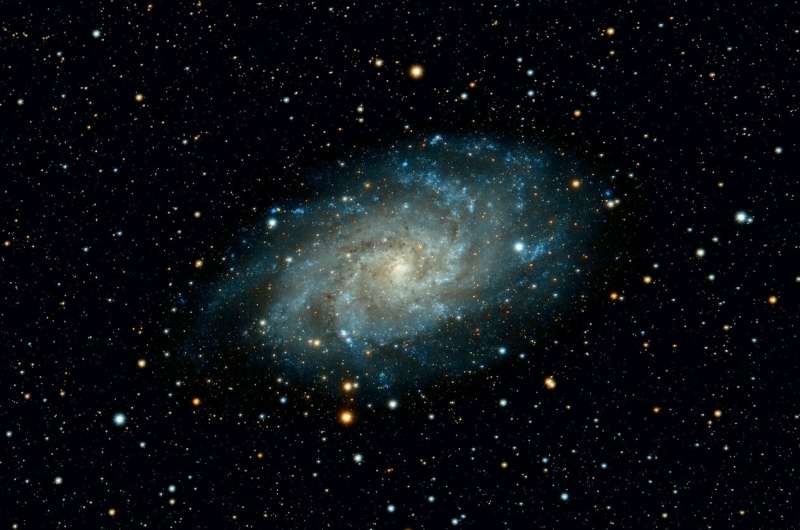This article has been reviewed according to Science X's and . have highlighted the following attributes while ensuring the content's credibility:
fact-checked
peer-reviewed publication
trusted source
proofread
Do 'completely dark' dark matter halos exist?

Every galaxy is thought to form at the center of a dark matter halo—a region of gravitationally bound matter that extends far beyond the visible boundaries of a galaxy. Stars are formed when gravity within dark matter halos draws in gas, but astrophysicists don't yet know whether star-free dark matter halos exist.
Now Ethan Nadler, a computational astrophysicist at UC San Diego, has calculated the mass below which halos fail to form stars. This work was done using analytic predictions from galaxy formation theory and cosmological simulations.
The study, titled was published in The Astrophysical Journal Letters and was led by Ethan Nadler.
"Historically, our understanding of dark matter has been linked to its behavior in galaxies. A detection of completely dark halos would open up a new window to study the universe," stated Nadler.
Previously, this threshold for star formation was thought to be between 100 million to 1 billion solar masses due to cooling of atomic hydrogen gas. Nadler's research shows that star formation can occur in halos down to 10 million solar masses through molecular hydrogen cooling.
With the Rubin Observatory coming online later this year and JWST already making unprecedented observations of our universe, there will soon be new data to test these predictions and reveal whether completely dark halos exist. This may have far-reaching consequences for cosmology and the nature of dark matter.
More information: The Impact of Molecular Hydrogen Cooling on the Galaxy Formation Threshold, The Astrophysical Journal Letters (2025).
Journal information: Astrophysical Journal Letters
Provided by University of California - San Diego




















